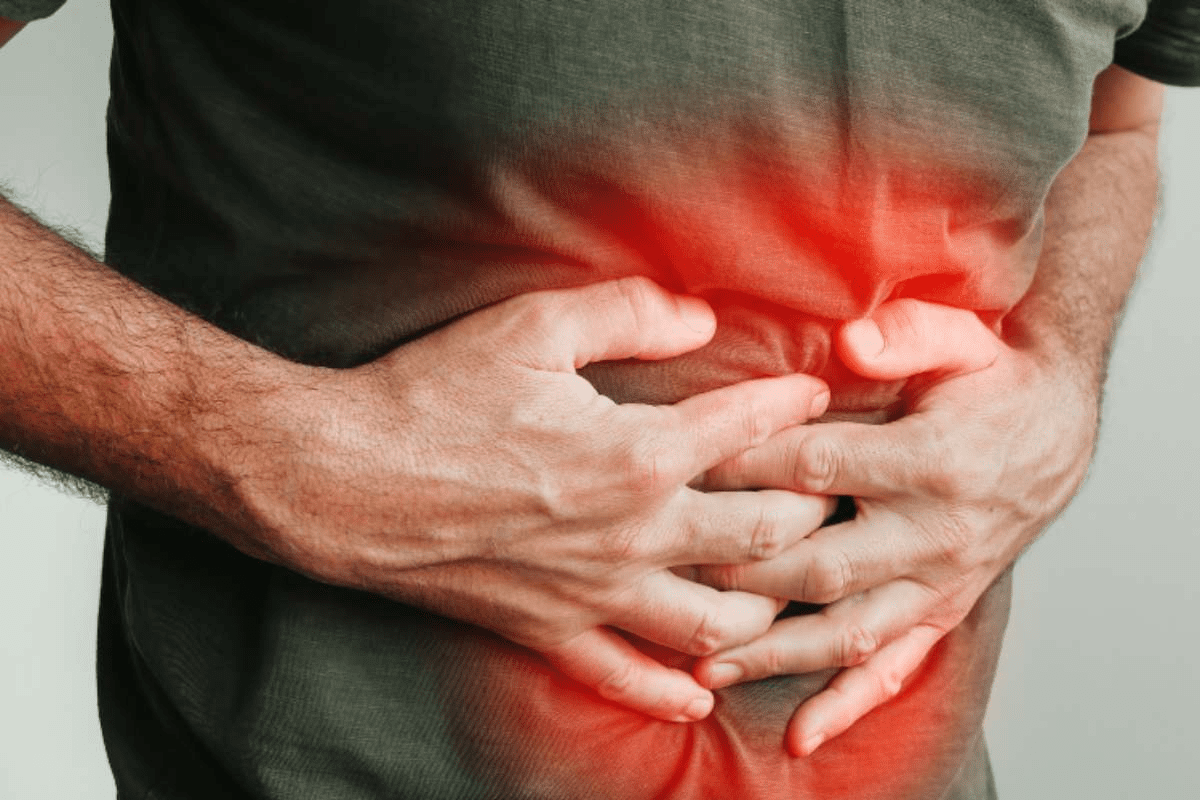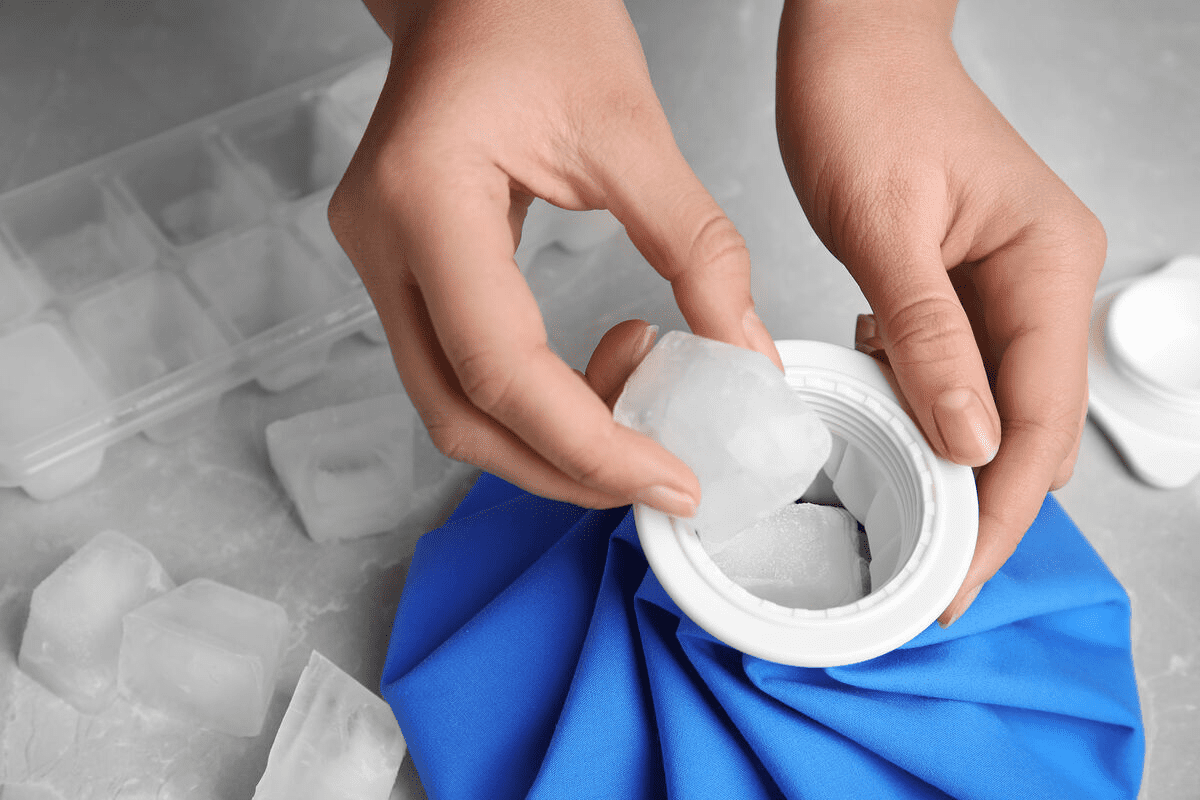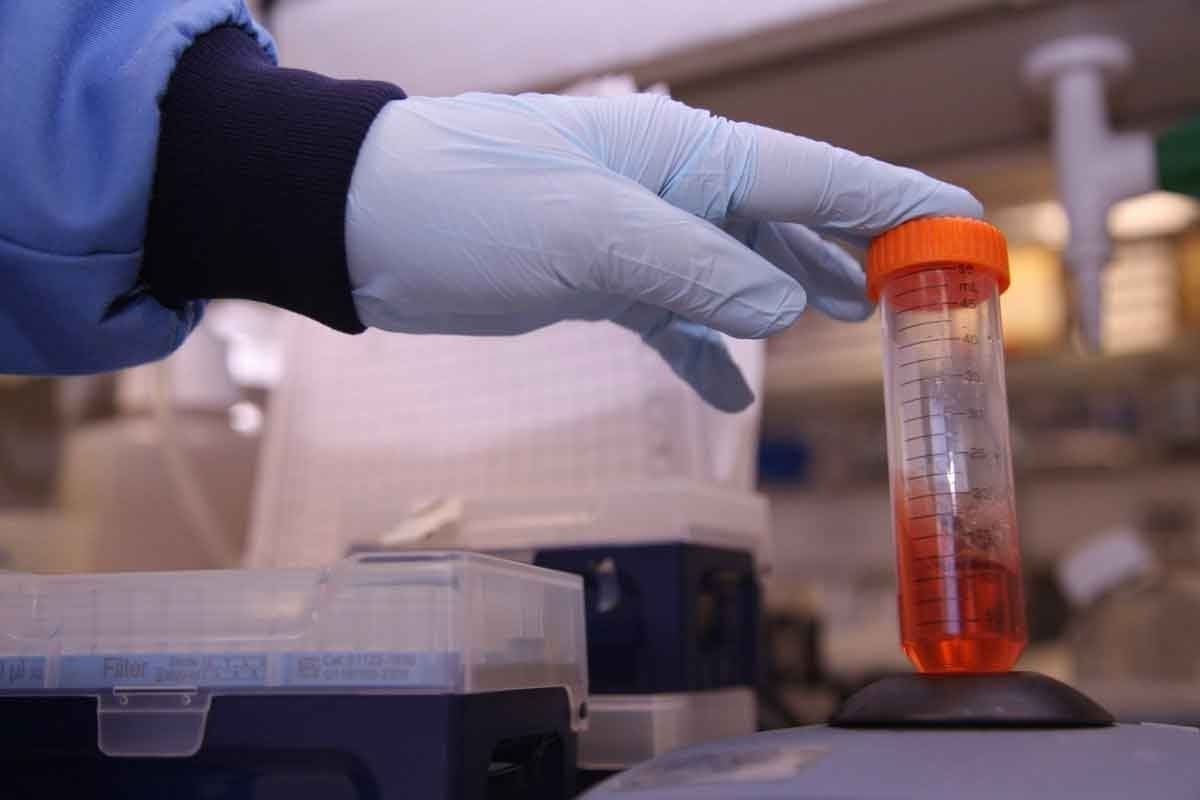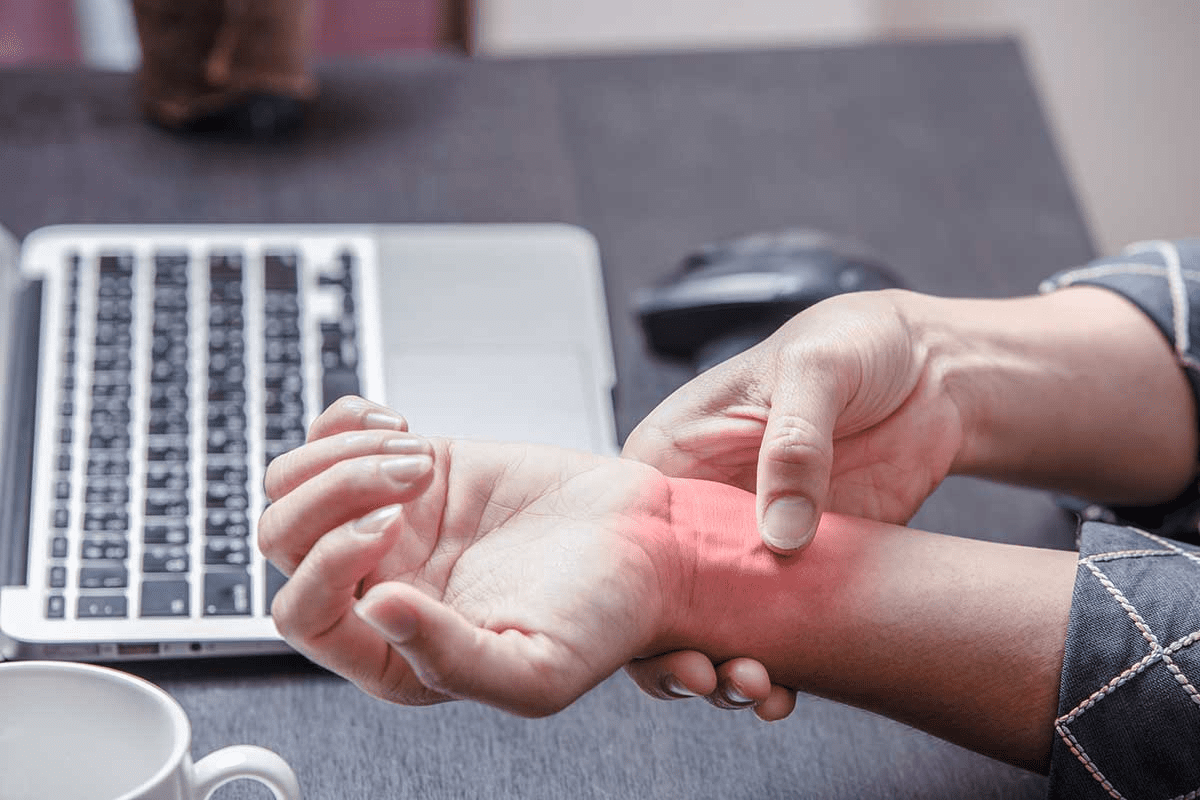Last Updated on November 27, 2025 by Bilal Hasdemir

At Liv Hospital, we use top-notch diagnostic tools to find and treat bone problems. A nuclear medicine bone scan is a precise test that spots issues like fractures, infections, arthritis, and cancer spread. It’s a key tool for us.
This test uses a tiny bit of radioactive tracer to show detailed bone images. It highlights any parts that are not working correctly.
Our modern facilities and skilled team make sure patients get the right diagnosis and treatment. We focus on quality care, using the newest in nuclear medicine.
Key Takeaways
- A nuclear medicine bone scan detects bone-related conditions such as fractures and cancer.
- The scan uses a small amount of radioactive tracer to provide detailed bone images.
- The procedure is generally safe with minimal radiation exposure.
- It helps guide both diagnosis and treatment plans for bone issues.
- Patients are advised to drink plenty of water after the scan.
The Purpose and Function of Bone Scans in Nuclear Medicine
Nuclear medicine has changed how we find and treat bone diseases. Bone scans help spot fractures, infections, and cancer spread. At Liv Hospital, we use this tech to care for our patients fully.
Definition and Basic Principles
Bone scans use tiny amounts of radioactive tracers. These tracers are taken up by bones. Then, a gamma camera shows where they are, helping find disease.
Doctors say bone scans are key to checking bone health. They give insights not seen with other scans.
| Imaging Technique | Primary Use | Key Benefits |
| Nuclear Medicine Bone Scan | Detecting bone fractures, infections, and cancer metastasis | Whole-body imaging, high sensitivity |
| X-ray | Initial assessment of bone fractures and degenerative changes | Quick, widely available |
| MRI | Detailed imaging of soft tissues and bone marrow | High resolution, no radiation |
How Nuclear Medicine Differs from Other Imaging Techniques
Nuclear medicine shows how the body works, unlike X-rays or CT scans. It gives a look at how different parts function.
Nuclear medicine bone scans are great for:
- Finding bone metastasis
- Spotting osteomyelitis
- Checking bone fractures and stress injuries
How a Nuclear Bone Scan Works
Nuclear bone scanning uses small amounts of radioactive tracers. These tracers help us see and understand bone activity.
Radioactive Tracers and Their Function
Radioactive tracers, like Technetium-99m labeled phosphonates, are injected into the patient’s blood. They gather in bones based on their activity level. This means diseased or injured bones take up more tracer, making them visible during the scan.
These tracers emit gamma radiation. Special cameras can detect this radiation. This is how we get detailed images of bone activity.
The Role of Gamma Cameras in Imaging
Gamma cameras are advanced tools that detect gamma radiation from the tracers. They move around the patient, taking pictures from different angles. Then, they create detailed images of bone structure and activity.
Gamma cameras help us see where the tracer is in the bones. This shows us where bone activity is not normal.
Absorption Patterns in Healthy vs. Diseased Bone
In healthy bones, the tracer spreads out evenly. But in diseased bones, there’s more tracer because of higher activity. This difference helps us spot bone problems.
We can find many bone issues, like fractures, infections, and cancer, by looking at how the tracer is taken up. This makes nuclear bone scans great for diagnosing.
The scan is quick and painless, lasting 30“60 minutes. It uses tiny amounts of radioactive tracers to find bone problems. This makes it a safe and useful way to diagnose.
What Does a Nuclear Medicine Bone Scan Show?
A nuclear medicine bone scan helps us understand bone health. It’s great for diagnosing and tracking many bone disorders. This tool gives us detailed insights into bone conditions.
Detection of Bone Fractures and Stress Injuries
Nuclear medicine bone scans are very good at finding fractures and stress injuries. They’re useful when X-rays don’t show enough. This is key for athletes or people with stress fractures that X-rays miss.
Identification of Bone Infections and Osteomyelitis
These scans also spot bone infections like osteomyelitis. They show where bone activity is high. This helps us catch infections early and start treatment right away.
Diagnosis of Arthritis and Joint Abnormalities
Nuclear medicine bone scans help find arthritis and joint problems. They show where bone activity is different. This info is key for figuring out how bad the damage is and planning treatment.
Cancer Detection and Metastasis Monitoring
One big use of these scans is finding cancer that has spread to the bones. They let us track how cancer moves and how well treatment works. This makes them very important in fighting cancer.
| Condition | Description | Benefits of Nuclear Medicine Bone Scan |
| Bone Fractures and Stress Injuries | Detection of fractures not visible on X-rays | Early diagnosis and treatment |
| Bone Infections and Osteomyelitis | Identification of infection sites | Prompt treatment initiation |
| Arthritis and Joint Abnormalities | Assessment of joint damage extent | Informed treatment planning |
| Cancer Detection and Metastasis | Monitoring cancer spread and treatment response | Effective oncology management |
Preparing for Your Nuclear Bone Scan
At Liv Hospital, we help you get ready for your nuclear bone scan. We make it easy for you. Preparing for a nuclear bone scan means following a few steps.
Pre-Scan Instructions and Requirements
Before your scan, it’s important to follow some key steps. We will give you all the details you need. This includes what foods and medicines to avoid. Also, tell us about any health issues or allergies.
Medications and Dietary Considerations
Some medicines and foods can affect the scan. Tell us about all the medicines and supplements you take. We’ll tell you if you should stop taking any before the scan.
Pregnancy and Breastfeeding Precautions
If you’re expecting or breastfeeding, let us know. Nuclear medicine uses small amounts of radioactive materials. We’ll check if it’s safe for you.
What to Bring to Your Appointment
Bring any important medical records and a list of your medicines. Wear comfy clothes without metal to avoid scan issues.
By following these steps and talking to our team, your scan will be safe and helpful. It will give us important information about your health.
The Complete Nuclear Bone Scan Procedure
Getting a nuclear bone scan is easy and involves a few steps. At our place, we make sure it’s done carefully and quickly, so you won’t feel much pain.
Tracer Injection Process
The first thing is putting a tiny bit of radioactive tracer into your vein. This tracer, called Technetium-99m, sticks to your bones and shows where there’s trouble. It’s fast and doesn’t hurt much.
Waiting Period and Its Importance
After the injection, you wait for a bit. This lets the tracer spread through your body and grab onto your bones. It can take anywhere from 30 minutes to a few hours. You can chill in a waiting area during this time.
This wait is key because it makes sure the tracer works well. This leads to better scan results.
The Scanning Process
Then, you lie on a table while a special camera takes pictures of your bones. This camera picks up the radiation from the tracer, making clear images. These images help doctors find and fix bone problems.
Duration and Patient Positioning
The scanning itself takes about 30 to 60 minutes. You’ll need to stay very quiet and might be moved a bit to get pictures from all sides. Our team will make sure you’re comfy the whole time.
| Procedure Step | Duration | Description |
| Tracer Injection | 5 minutes | Injection of radioactive tracer into a vein |
| Waiting Period | 30 minutes to a few hours | Allows tracer to circulate and be absorbed by bones |
| Scanning Process | 30-60 minutes | A gamma camera captures images of bones |
The bone scan is usually painless and easy for most people. Our team is here to make sure you’re comfortable and get the best results.
Whole Body Nuclear Medicine Bone Scan Benefits
Whole-body nuclear medicine bone scans have changed how we look at bones. They give a complete view of the skeleton in one scan. This helps doctors see the whole picture of bone health.
Advantages of Full-Body Imaging
Whole-body scans are great for finding problems all over the skeleton. They’re key for spotting diseases like cancer that spread to many bones. Doctors can see how far the disease has gone and plan better treatments.
These scans also catch hidden problems that might not show up in local scans. This can lead to finding and treating problems sooner. It can make patients’ outcomes better.
When Targeted Scans Are Preferred
But sometimes targeted scans are better. They focus on specific areas, giving detailed pictures. This is useful when symptoms are in one spot or when a certain area needs watching closely.
Targeted scans are quicker and use fewer resources than whole-body scans. But the choice depends on the patient’s needs and the situation.
Comparison with Other Whole-Body Imaging Methods
Nuclear medicine bone scans have big advantages over other imaging, like MRI or CT. They show how bones are working, not just what they look like.
They’re very good at spotting early signs of disease or how well treatments are working. While other methods have their uses, nuclear medicine scans give a special view of bone health. This is very helpful in some cases.
Nuclear Medicine Bone Scan Side Effects
Nuclear medicine bone scans are usually safe. But here are the side effects to know about. At Liv Hospital, we make sure our scans are done carefully to keep you safe.
Common Minor Side Effects
Most people don’t feel much after a bone scan. You might feel a bit of pain or swelling where the injection was given. These feelings usually go away quickly.
Some people might have an allergic reaction to the tracer used. This could make you itch, break out in hives, or have trouble breathing. Our team is ready to help if this happens.
Rare Adverse Reactions
But serious side effects are very rare. It’s important to tell your doctor about any health issues or allergies before the scan.
Radiation Exposure Levels and Context
The scan does involve some radiation. But the amount is similar to other tests like CT scans. We use strict rules to keep the radiation low while getting good images.
| Procedure | Typical Effective Dose (mSv) |
| Nuclear Medicine Bone Scan | 3-5 |
| CT Scan (Abdomen and Pelvis) | 10-20 |
| X-ray (Chest) | 0.1 |
Safety Measures and Risk Minimization
We follow strict rules to keep you safe. This includes the right amount of tracer and watching you closely during and after the scan. We also tell you how to protect others from radiation.
Key safety measures include:
- Careful patient screening before the procedure
- Accurate dosing of the radioactive tracer
- Monitoring during and after the scan
- Patient education on post-procedure precautions
Knowing about side effects and safety helps you make good choices for your health. If you have questions about bone scans, our team is here to help.
Interpreting Nuclear Medicine Bone Scan Results
Understanding the results of a nuclear medicine bone scan is key to accurate diagnosis and treatment planning. We look for areas of increased or decreased bone activity. This can show different conditions.
Understanding “Hot Spots” and “Cold Spots”
A nuclear medicine bone scan shows “hot spots” and “cold spots.” Hot spots mean the radioactive tracer builds up more, showing increased bone activity. This could be due to fractures, infections, or cancer spreading. On the other hand, cold spots mean less tracer, possibly showing bone tumors or dead bone tissue.
Normal vs. Abnormal Findings
Deciding if results are normal or abnormal needs expertise. Normal scans show the tracer evenly across bones. Abnormal scans show hot or cold spots, which we analyze for their meaning.
Follow-up Procedures After Abnormal Results
If results are abnormal, we might suggest more tests. These could be X-rays, CT scans, MRI scans, or biopsies. The right test depends on the suspected condition and the patient’s health.
Timeframe for Receiving Results
The time to get nuclear medicine bone scan results varies. Preliminary results come soon after the scan. Detailed results take a few days. We make sure patients get their results quickly and understand what they mean.
| Condition | Typical Scan Findings | Common Follow-up Procedures |
| Fractures | Hot spots at the fracture site | X-rays, CT scans |
| Infections | Hot spots in the affected bone | Blood tests, MRI scans |
| Cancer Metastasis | Multiple hot spots throughout the skeleton | Biopsy, PET scans |
Interpreting nuclear medicine bone scan results is complex. At Liv Hospital, we’re dedicated to accurate and timely interpretations. We ensure our patients get the best care.
Advancements in Nuclear Medicine Bone Imaging
Nuclear medicine has changed bone imaging a lot, making diagnosis better. At Liv Hospital, we keep up with these changes. This way, our patients get the best care with the newest technology.
Recent Technological Improvements
In recent years, nuclear medicine has seen big tech improvements. These changes make bone scans more accurate and early detection possible.
Improved Resolution: New gamma cameras take clearer pictures. This helps doctors make more precise diagnoses.
Reduced Scan Times: New detectors make scans faster. This makes patients more comfortable and saves time.
Hybrid Imaging Techniques
Hybrid imaging combines nuclear medicine with CT or MRI. It gives both functional and anatomical details. This makes diagnoses more accurate.
“The integration of hybrid imaging techniques has been a game-changer in nuclear medicine, providing unparalleled insights into bone health and disease.” – Expert in Nuclear Medicine
- SPECT/CT: This combines SPECT with CT. It gives detailed info on both function and anatomy.
- PET/CT: PET and CT together are great for finding bone metastases and other issues.
- PET/MRI: PET and MRI together offer great soft tissue contrast and functional info.
Future Directions in Bone Scan Technology
The future of bone imaging in nuclear medicine is bright. New research and tech are coming. Things like new tracers and better image algorithms will improve it.
We’re always pushing forward in nuclear medicine. Our goal is to give our patients the best diagnostic tools. We’re committed to staying ahead in tech to offer top-notch care.
When Is a Nuclear Medicine Bone Scan Recommended?
If you think you might have bone problems, a nuclear medicine bone scan could be key. This scan is very good at finding bone issues. It’s used for many bone-related health problems.
Medical Conditions Requiring Bone Scans
We suggest nuclear medicine bone scans for several bone issues. These include:
- Bone fractures and stress injuries
- Bone infections such as osteomyelitis
- Arthritis and joint abnormalities
- Cancer and metastasis monitoring
Experts say,
“Nuclear medicine bone scans are great for spotting changes in bone metabolism. This can show up as different bone disorders.”
Alternatives to Nuclear Bone Scans
There are other ways to see inside your body to,o. These include:
- X-rays
- Computed Tomography (CT) scans
- Magnetic Resonance Imaging (MRI)
Each has its own strengths and is better for certain needs.
Comparing Diagnostic Value with Other Imaging Methods
When looking at nuclear medicine bone scans and other methods, several things matter. The table below shows how different imaging methods stack up for common bone issues.
| Imaging Method | Bone Fractures | Bone Infections | Cancer Detection |
| Nuclear Medicine Bone Scan | High sensitivity | High sensitivity | High sensitivity |
| X-ray | Moderate sensitivity | Low sensitivity | Low sensitivity |
| CT Scan | High sensitivity | High sensitivity | Moderate sensitivity |
| MRI | High sensitivity | High sensitivity | High sensitivity |
Insurance Coverage and Cost Considerations
The price of a nuclear medicine bone scan can change based on where you are and your insurance. We help patients understand their insurance and the costs of the scan.
Conclusion
At Liv Hospital, we focus on top-notch care for our patients. We use the latest in nuclear medicine, including bone scans. These scans help us find and track bone problems.
Our team uses nuclear bone scans to spot fractures, infections, and cancer in bones. This helps us start treatment quickly and effectively. These scans give us important information about bone health.
We follow the latest medical standards to give our patients the best care. Our team works together to focus on the patient. We aim to meet international healthcare standards.
Nuclear medicine helps us improve patient care and life quality. It’s a key tool for us to find and track bone issues. It’s essential for our medical work.
FAQ
What is a nuclear medicine bone scan?
A nuclear medicine bone scan is a test that uses tiny amounts of radioactive material. It helps find and track bone problems like fractures, infections, and cancer.
How does a nuclear bone scan work?
A nuclear bone scan injects a radioactive tracer into your blood. This tracer goes to your bones. A special camera then picks up the radiation, making images of your bones to spot issues.
What does a nuclear medicine bone scan show?
This scan can reveal many bone issues, like fractures, infections, and cancer. It also checks how these problems are getting better or worse with treatment.
Are there any side effects of a nuclear medicine bone scan?
Mostly, these scans are safe. But you might feel a bit uncomfortable where the tracer was injected or have an allergic reaction. Rarely, you might get some side effects, but the radiation exposure is very low.
How do I prepare for a nuclear bone scan?
To get ready, you might need to stop some medicines and not eat or drink for a few hours. Also, take off any metal things. If you’re pregnant or breastfeeding, tell your doctor first.
What is the procedure for a nuclear bone scan?
The process starts with a tracer injection. Then, you wait a few hours for it to settle in your bones. After that, you get scanned with a gamma camera. It’s usually painless and takes about 30-60 minutes.
What are the benefits of a whole-body nuclear medicine bone scan?
This scan gives a full view of your skeleton. It’s great for finding and tracking many bone issues, like cancer and infections, all over your body.
How are nuclear medicine bone scan results interpreted?
Doctors look at the scan images for any unusual spots. “Hot spots” mean more activity, and “cold spots” mean less. If they find anything odd, they might need to do more tests or follow-ups.
Are nuclear medicine bone scans covered by insurance?
Insurance for these scans varies. It depends on your provider and the reason for the scan. Always check with your insurance to see what’s covered.
What are the latest advancements in nuclear medicine bone imaging?
New tech like PET/CT and SPECT/CT combines nuclear medicine with other imaging. This gives clearer and more detailed images of your bones.
When is a nuclear medicine bone scan recommended?
Doctors often suggest this scan for bone-related issues like cancer, infections, and arthritis. It’s also useful for checking bone pain or injuries.
References:
- Suppiah, S., et al. (2023). A review on the usage of bone single-photon emission computed tomography and computed tomography (SPECT/CT) in diagnosing bone metastases. Seminars in Nuclear Medicine, 53(4), 472-485. https://www.ncbi.nlm.nih.gov/pmc/articles/PMC10348494/






